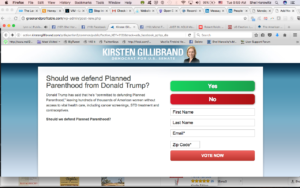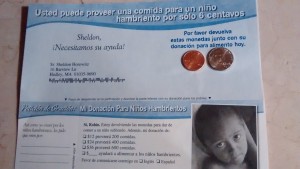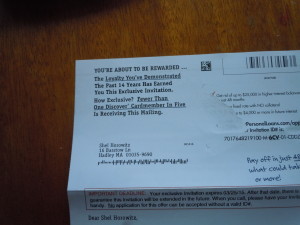What I Told the Democrats, and Why
There’s one Democratic Party candidate for Congress whose annoying emails just pushed me over the edge. But the Democratic Party is routinely guilty of this, and I’ve gotten off many of the lists of their various front groups. And probably, so are the Republicans (I’m not on their lists).
As I moved a full 100 emails received in the past month from this candidate’s organization or the Democratic Party on behalf of this candidate, I noted once again the in-your-face headlines. Here are just some of the examples from just the past week, in the order I received them (spacing, emoticons, and capitalization in the originals):
- Special Election RUINED
- TERRIFYING prediction
- this just got WORSE (Paul Ryan)
Paul Ryan = FURIOUS
- please, please, PLEASE
- HUGE mistake
- No!!!!!!!
- R U I N E D
I’m a copywriter. I know what this candidate’s team is doing, and why. I know which hot buttons they are trying to push. But just as too much of the finest food still gives you a bellyache, too much hot-button-pushing makes the mechanism seize up. I’ve received 14 separate messages since Sunday morning (I’m writing this on Tuesday morning). It feels like marketing by assault rifle.
My response mechanism seized up. I put them on the not-giving-any-more-money list and unsubscribed. The form asked for a reason, and here’s what I wrote:
I don’t like your constant-crisis approach. I just deleted 100 emails from you all screaming at me, most unopened. I’m really sick of “the Republicans are out to get us, send us money again.” And also sick of “we’re on the verge of victory, send us more money.” I wish [Candidate name] well and hope he wins, but I want the Dems and especially [Candidate name] to market to me via intelligence and not fear. I am a marketer and have run successful campaigns.
Can’ we be better than this? I want candidates who will tell me what they will do FOR their district and their country, and not just that a powerful opponent hates them.

Remember: you are in someone’s email box because of the recipient’s good graces. Don’t abuse the relationship or overstay your welcome. If you annoy, you don’t get read, and eventually, you lose a subscriber. You could even find yourself blacklisted for spam.








